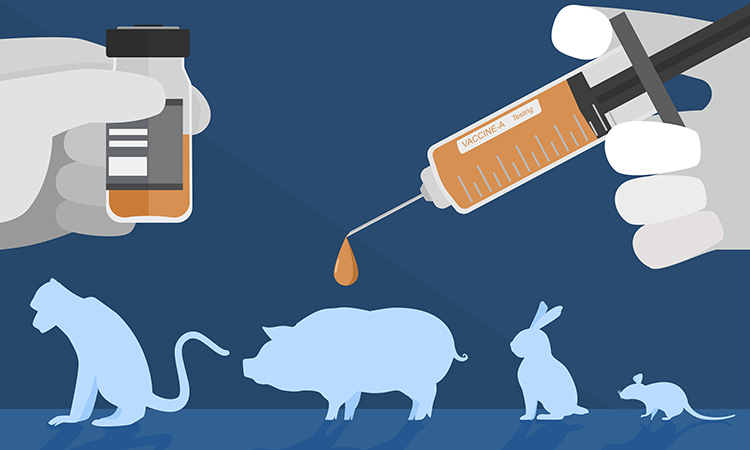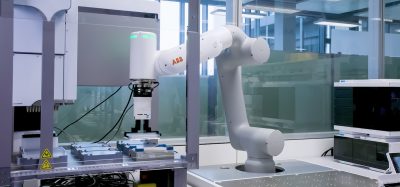Exploring alternatives to animal testing in drug discovery
Posted: 6 July 2023 | Ria Kakkad (Drug Target Review) | No comments yet
The use of animal studies in drug development has become a growing ethical concern, particularly given the high failure rate of clinical trials, which can reach up to 90 percent. This article highlights non-animal models that could expedite the drug delivery process from bench to bedside.


Animal testing plays a significant role in pre-clinical research and therefore requires the use of millions of animals. In Britain, 2.88 million scientific procedures involving live animals were carried out in 2020.1 Over a quarter of those were for basic research purposes, with most common areas focused on the immune system, the nervous system and oncology.1
Ethical concerns surrounding the use of animal studies is increasing, especially considering 90 percent of drug candidates fail in clinical trials.2 Therefore, the scientific community is researching and developing efficient ways to test compounds without the use of animals, to avoid unsuccessful outcomes in clinical trials.
the scientific community is researching and developing efficient ways to test compounds without the use of animals, to avoid unsuccessful outcomes in clinical trials.
History behind animal testing
In December 2022, the US Government approved the ground-breaking US Food and Drug Association (FDA) Modernization Act 2.0, allowing researchers to use “certain alternatives to animal testing, including cell-based assays and computer models, to obtain an exemption from the FDA to investigate the safety and effectiveness of a drug.”3 Furthermore, the act “removes a requirement to use animal studies as part of the process to obtain a license for a biological product that is biosimilar or interchangeable with another biological product.”3
The first act was approved in 1938 in response to a drug — elixir sulphanilamide — that caused 105 deaths after researchers failed to test the antibiotic before release.4 Research around substitutes to in vivo testing has accelerated with scientists developing successful in vitro, ex vivo and in silico models, arguably leading to less reliance on animals.
Many biopharmaceutical companies are already committed to finding alternatives to animals, based on the ethical principals of the Three Rs of animal testing: replacement, reduction and refinement. Scholars William Russell and Rex Burch proposed these standards in 1959 and described them in order:
- Replace: substituting animals with other alternatives
- Reduce: decreasing animal use to obtain precise information
- Refine: reducing pain if animals must be used.5
Speaking with Drug Target Review, Kirsty Reid, Director of Science Policy at the European Federation of Pharmaceutical Industries and Associations (EFPIA), emphasised: “Rather than replacing animal testing, the Three Rs aim to remove redundant tests.
“Animal testing has been put in place as part of a regulatory approach, but arguably, they do not bring a sufficient amount of scientific knowledge,” she continued.
So, what are some methods to ensure researchers generate sufficient pre-clinical data before clinical trials?
In vitro alternatives to animal testing
Research into cell cultures, where cells are grown under controlled conditions outside their natural environment, has increased and advanced over the past decade. These cell cultures can be used to mimic aspects of human physiology.
Three-dimensional organoids have been a popular choice in testing drugs to treat cancer and disease. For example, researchers at USC Stem Cell, US grew kidney organoids from human pluripotent stem cells (hPSCs) to identify potential drugs for treating autosomal dominant polycystic kidney disease (ADPKD). The organoids consisted of one or two structures resembling the kidney’s filtering units, known as nephrons. Using CRISPR-Cas9 gene editing, the scientists inactivated PKD1 or PKD2 to create cysts in the organoids for studying ADPKD. They performed the first screen using gene-edited human organoids and identified potential therapeutic drugs for ADPKD, including quinazoline.6
Similarly, researchers at Texas A&M University, US created the first lymphangion-chip to understand the mechanical forces behind lymphatic pathophysiology and physiology for developing new targets to treat lymphatic vascular diseases. They successfully recreated a typical section of a lymphatic transport vessel in vitro and concluded that their bioengineered platform is suitable for pre-clinical research of lymphatic and blood mechanobiology, inflammation and translational outcomes.7
These in vitro models, such as organoids and organ-on-a-chip devices, therefore offer insights into organ function and disease pathophysiology, and may aid in identifying potential therapeutic drugs.
Ex vivo substitutes to animal testing
Scientists are developing ex vivo assays, which involve performing experiments on living tissues in a cultured environment outside of an organism while maintaining natural conditions.
A new research paper, co-authored by PETA Science Consortium International e.V., the Institute for In Vitro Sciences (IIVS) and the University of Minnesota, all US, is set to revolutionise inhalation research and toxicity testing.
The paper reveals that fresh and cryopreserved human precision-cut lung slices can be utilised to evaluate the toxicity of inhaled chemicals. These frozen-thawed lung slices can remain functional for at least four weeks, similar to fresh slices, thereby expanding the availability of these tissues for research and reducing the need for animal testing.9
As donated human lungs are scarce, this breakthrough will aid in replacing animal tests with a more ethical and efficient approach to studying the effects of chemicals, drugs and other substances on the human lung.
“Cryopreserved human precision-cut lung slices shows the potential applicability of this highly relevant ex vivo model in respiratory research and testing for complex, long-term diseases,” Dr Vivek Patel, Study Director at Institute for In Vitro Sciences, Inc told Drug Target Review. “With the regulatory agencies willing to accept pre-clinical data from non-animal models (NAMS), more industries and academic institutions are expected to switch to NAMs either completely or in part, leading to reduction in animal testing.”
Computer models that mimic human cells
In silico methods use computer models to mimic the effect of drugs on the human body.
The University of Kansas, US, for example, proposed a novel technique for modelling the molecular life of cells using computers, according to a study published in the Proceedings of the National Academy of Sciences.10 The researchers claim that their findings represent a significant step towards creating a functioning simulation of a living cell at the atomic level, providing new insights into the fundamental biology of cells and improving the precision and speed of disease treatment.10
Lead author Ilya Vakser said that the new approach is tens or hundreds of thousands of times faster than existing atomic resolution techniques, enabling researchers to study physiological mechanisms beyond the current reach of computational modelling. The team overcame a significant hurdle in modelling cells through computers, namely the challenge of modelling protein interactions and dynamics. They bridged the gap between the two main modelling methodologies – protein docking and molecular simulation – and developed an algorithm to drive the new simulation.11
Vakser added that the approach could be applied to identify targets for drug design or determine the harmful effects of genetic mutations by detecting critical elements in protein association patterns.11
The future of animal testing
Although there are moves to decrease the use of animals in pre-clinical research, it is highly unlikely that animals will be completely removed in the near future.
Patel is confident, however, that advancing non-animal models will certainly decrease the need for animals: “With the regulatory agencies willing to accept preclinical data from non-animal models, more industries and academic institutions are expected to switch to NAMs either completely or in part, leading to reduction in animal testing.”
When speaking to Reid, it was clear that current motivations lie in reducing animals. Reid, for example, said: “The plan for now is to accelerate the development of the analytical methods, looking at replacing animal testing, and in the meantime, supporting drastic reductions of either redundant tests by authorities to the bare minimum where we can, or to find other means to at least refine the methods, and increase the culture of care where animals are still being used.”
Overall, there are several alternatives to animal testing that can be used in pre-clinical research. These alternatives offer many advantages, including ethical considerations, reduced costs and improved accuracy. In vitro and in silico methods, 3D tissue engineering and organ-on-a-chip are some of the promising alternatives that could replace animal testing.
However, it is important to note that no single method can fully replace animal testing, and a combination of different methods may be necessary to obtain a comprehensive understanding of complex biological processes. Nonetheless, with the continued advancements in technology and increasing awareness of the ethical issues associated with animal testing, these alternatives hold great promise for the future of pre-clinical research.
References:
- Annual statistics of scientific procedures on Living Animals, Great Britain, 2020 [Internet]. GOV.UK. 2020 [cited 2023Feb24]. Available from: https://www.gov.uk/government/statistics/statistics-of-scientific-procedures-on-living-animals-great-britain-2020/annual-statistics-of-scientific-procedures-on-living-animals-great-britain-2020#experimental-procedures-1
- Sun D, Gao W, Hu H, Zhou S. Why 90% of clinical drug development fails and how to improve it? Acta Pharmaceutica Sinica B. 2022;12(7):3049–62.
- 5002 – 117th Congress (2021-2022): FDA Modernization act 2.0 [Internet]. Congress.Gov. 2022 [cited 2023Feb24]. Available from: https://www.congress.gov/bill/117th-congress/senate-bill/5002
- Wax PM. Elixirs, diluents, and the passage of the 1938 Federal Food, Drug and Cosmetic Act. Annals of Internal Medicine. 1995;122(6):456.
- Hubrecht R, Carter E. The 3Rs and humane experimental technique: Implementing change. Animals. 2019;9(10):754.
- Tran T, Song CJ, Nguyen T, et al. A scalable organoid model of human autosomal dominant polycystic kidney disease for disease mechanism and Drug Discovery. Cell Stem Cell. 2022;29(7).
- Danku AE, Dulf E-H, Braicu C, et al. Organ-on-a-chip: A survey of technical results and Problems. Frontiers in Bioengineering and Biotechnology. 2022;10.
- Selahi A, Fernando T, Chakraborty S, et al. Lymphangion-Chip: A microphysiological system which supports co-culture and bidirectional signaling of lymphatic endothelial and Muscle Cells. Lab on a Chip. 2022;22(1):121–35.
- Patel VS, Amin K, Wahab A, et al. Cryopreserved human precision-cut lung slices provide an immune competent pulmonary test system for “on-demand” use and long-term cultures. Toxicological Sciences. 2023;191(2):253–65.
- Vakser IA, Grudinin S, Jenkins NW, et al. Docking-based long timescale simulation of cell-size protein systems at Atomic Resolution. Proceedings of the National Academy of Sciences. 2022;119(41).
- Rees V. Powerful computer modelling approach developed to simulate cells [Internet]. Drug Target Review. 2022 [cited 2023Feb24]. Available from: https://www.drugtargetreview.com/news/105601/powerful-computer-modelling-approach-developed-to-simulate-cells/








